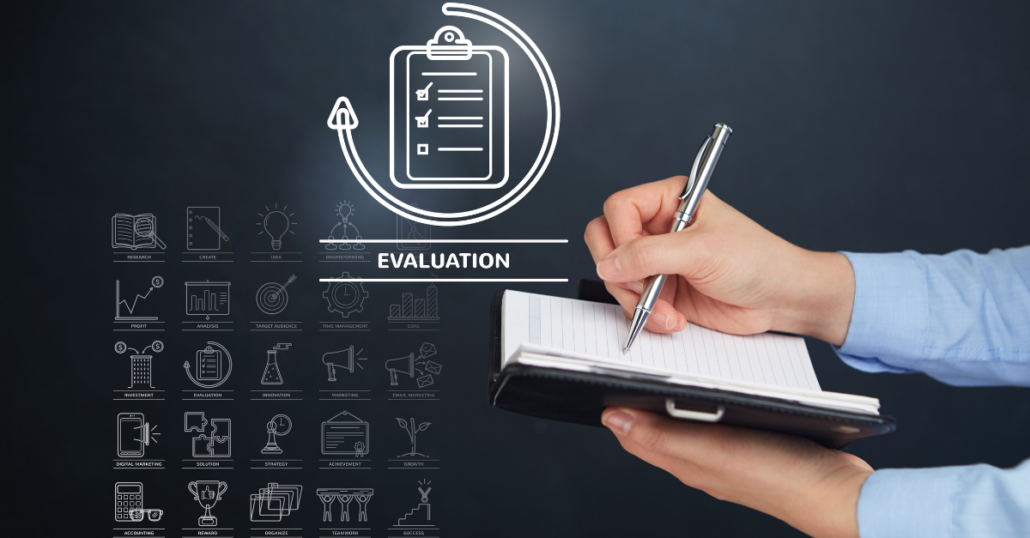Top 4 Ways to Leverage PIM for AI Voice Search
Voice assistants are no longer futuristic gadgets—they’re everyday shopping companions. From Alexa to ChatGPT Voice, consumers are using conversational AI to find, compare, and even...
Published: Mar 7, 2024 Updated: Sep 18, 2024
Consumer behavior is the study of the black box of the consumer’s mind. It attempts to understand what goes on in the mind of the buyer when looking around or when making a purchase decision. This study also attempts to understand how the buyer intent changes from just looking around to actually making a purchase.
This study is replete with theories that attempt to understand behavior. It uses psychology and research on the consumer’s needs to determine exactly what the consumer wants. But how does this study help marketers?

Marketers need to assess consumer behavior to target the right points. They want to understand where the consumer is on the buyer’s journey so they can make a nudge to get them to the right direction and reach the end goal, which, in many cases, is purchasing.
However, in challenging economic times when people’s purchasing power declines, buyer behavior is greatly affected by psychological factors. Understanding buyer intent in a period of inflation is important for marketers to keep the company afloat and grow despite the challenging economy.
The buyer intent aims to define the willingness of the prospect to buy the product. The buyer’s intent is usually measured qualitatively by studying the prospect’s behavioral data. By assessing this stat, the seller can assess how close a prospect is to becoming a customer and what the sales cycle will be like.
However, in eCommerce settings, the buyer’s intent can be measured by other statistics like putting items in the cart or searching for keywords like “buy shoes online”. The prospects who search for “how to clean shoes” might not be looking for shoes or might have already purchased shoes.

These different groups of prospects need to be targeted with different marketing strategies. Understanding what will turn the prospect into a buyer is what helps marketers to invest in the right marketing strategies. The buying intent of these two groups of prospects can be labeled as the types of buyer intent: passive buying intent, active buying intent, and awareness intent.

Active buying intent means that the prospect is actively looking for a product and will likely make a purchase decision soon.
Passive buying intent means that the person has already purchased a similar product but is unsatisfied with it. These prospects are not searching for a new product to purchase but rather looking for a solution to the problem they face.
Awareness intent means that the prospect has a personal problem or a pain point that they are looking to resolve. They are in the process of gathering information to make the purchase. So, they are a step away from developing an active buying intent.
In the early days, marketing was all about highlighting the product’s features and promoting its uses. However, today, marketing is centered around the customer – what benefits the product brings for the customer and how it meets their needs and wants.
The audience’s focus begins at the first step of product creation. The customer’s problem and pain points lay the foundation of the product concept. Then, picking the right channels and marketing at the right time is what drives product success for any business.

Studying the buyer’s intent is important to this customer-centric marketing. If the buyer is searching for a solution to a problem with a similar product, using sales-y language to sell them a new product won’t work.
So, it’s best to deal with passive buyer intent as a marketing strategy to bring the prospect in the sales funnel. Once the prospect knows about the brand that resolves their problem, they will make their way through the sales funnel and turn their passive buying intent to active buying intent.
A buyer with an awareness intent is gathering information about the product. They are looking at competitor brands and assessing the key features that will benefit them and resolve the pain points they face.
However, in a period of inflation, most buyers do not have an active buying intent, especially when the product is not catering to their basic needs. For example, luxury products or shopping products would not have a high number of prospects with an active buying intent.
There might be some people with an awareness intent. However, because these prospects want to make the most of their investment, they will be more critical of product data during their research. They will only pick the product that they are sure will fulfill their needs and resolve their problem.

In this case, studying the different types of buyer intent would be important to craft a marketing strategy that keeps your conversion rate growing.
The buyer’s data is collected at various stages of the prospect’s journey. Businesses collect this data to understand the buyer’s intent and approach them with personalized and targeted marketing messages. However, before this data is collected, it is important for marketers to understand the stages a prospect goes through to develop a high buying intent:
The first stage in the customer intent journey is awareness. The prospect is aware that they have a problem and that the market has a solution to their problem.
In the second stage, the prospect educates themselves about the problem and the available solutions. They assess whether the solutions available meet their needs and resolve their problems.
When buyers are aware of the problem they face and the solutions available, they start searching for particular solutions. They shortlist a few businesses offering the solution and then move on to the next stage of developing intent.

At the fourth stage of developing buying intent, the prospect deep dives into the shortlisted vendors. In a period of inflation, the process of market research is quite intensive as they want the best value for the money they are spending. They also search for any discounts that the shortlisted vendors are offering, assess word-of-mouth references, and conduct online research.

After market research, the prospect then books a demo for the product, signs up for a free trial, or reaches out to the sales rep to get first-hand information on the product. Once they are satisfied that the product will meet their needs or resolve their problem, they move onto the purchase intent.
When the prospect develops a high purchase intent, they opt one of two ways:
Choose you: The prospect chooses you because your solution meets their needs.
Choose the best deal: The prospect wants to go for the best pricing. If the sales rep feels that the prospect needs a good deal, they can negotiate on pricing or offer them other deals to onboard them as customers. It’s time to negotiate pricing, setup, onboarding, and other specifics.

During a period of inflation, assessing buyer intent is quite important to maximize the return on investment in marketing and keep the company profitable. Here are some ways studying buyer intent helps businesses stay afloat during inflation:
During inflation, a small number of customers show a high buying intent. Understanding their journey is important to implement marketing strategies that improve conversion rates. For instance, anyone who puts an item in their cart and abandons it should be reached out with a reminder email.
Another important way to determine the buyer’s intent is to track their journey on the website. If their journey is similar to past buyers, it means they have a high buyer’s intent. For instance, searching for a particular product on the platform and browsing through the list of products for more than a certain number of minutes could mean that the buyer is interested in making a purchase.

On the other hand, if the business tracks a prospect with a low buying intent, they could be engaged with YouTube videos, relevant blogs, and notifications about upcoming sales.
This approach to improving profitability usually works for a B2B sales effort or when the customer is investing in an expensive product. Personalizing conversations with the B2B representative or a customer stepping inside a shop could help convert a prospect with a high buyer intent into a customer.
Personalized conversations also help understand what the customer wants and suggest products according to their needs rather than those that are not relevant to the customer’s pain points.

Personalizing conversations is not possible for an eCommerce business with a huge customer base. In this case, automating chats using AI-powered chatbots can help leverage buyer intent by personalizing conversations to some degree. On the other hand, prospects who visit your website by clicking a sponsored ad on Instagram or Facebook could be retargeted and converted from prospects with a high or low buying intent to customers.
During a period of inflation, businesses that are already in the industry have a good opportunity to build on their brand image. This is a time when the industry will not have a lot of new competitors. So, existing businesses can build their mark with customers by providing them with valuable content, how-to guides, and informative videos.

At this point, there will be a lot of customers with an awareness intent. When these customers get high-value content and associate authenticity and trust with the brand, the brand will establish a top-of-mind position and quickly convert them into customers once they develop a high buying intent.
During a period of inflation, customers are looking for products that clearly show their features and the benefits they offer. Products with enriched product descriptions are, therefore, winners during periods of inflation because their detailed descriptions build trust with prospects with high buying intent.

Consider having $10 to purchase a product. You go through five products, out of which only one has a detailed overview of the product specs and is enriched with videos and photos. The other four products you see have low-resolution images and brief product descriptions. With a low tolerance for risk, you will purchase a product that has a detailed guide that convinces you of its benefit for you.
In a period of inflation, consumer behavior is quite different from other times. During this period, the customer spends more time in the consideration, market research, and evaluation phases before finally developing a buying intent. However, this means that marketers need to go the extra mile to understand the buyer’s journey and prove to them that they are offering the best solution to their problems.

For eCommerce businesses, reaching out to every individual customer is not possible. Therefore, in a period of inflation, the marketer’s best bet is to rely on enriched product descriptions and accurate information. However, if the eCommerce business has hundreds of products in its portfolio, product data management can be hard. During inflation, businesses also want to maximize their sales channels to improve visibility. Different channels have different formatting requirements for product spec sheets.
Modifying the product information for different platforms and enriching them with keywords that attract prospects with high buying intent is hard work. However, Pimberly AI automated 80% of manual processes in data management. Not only does it minimize the chances of human error, but it also helps generate product descriptions that are accurate and effective for attracting the high buying intent prospect.
Find out how Pimberly fits your business by getting a product demo for Pimberly’s PIM system from our team today.


